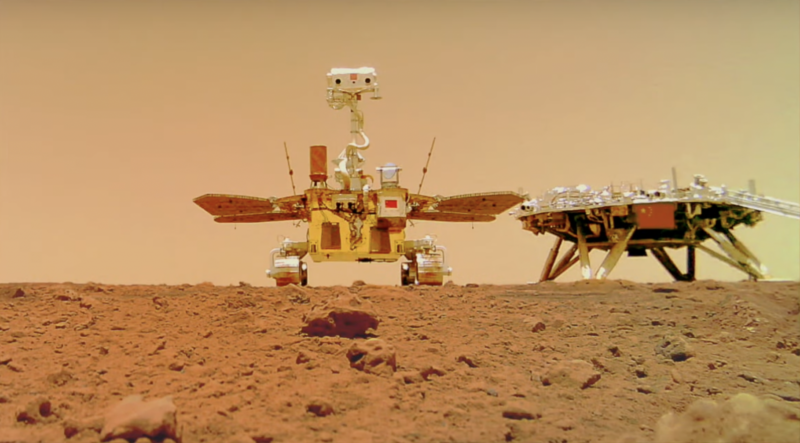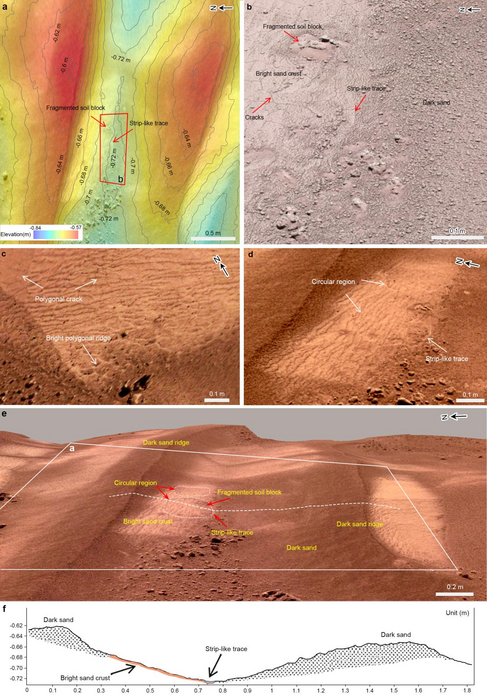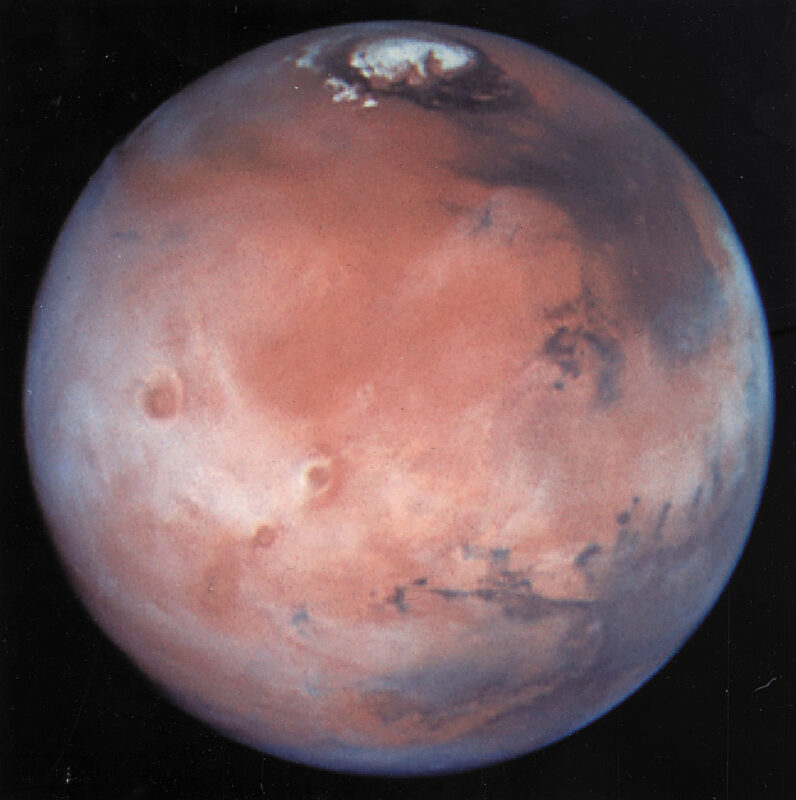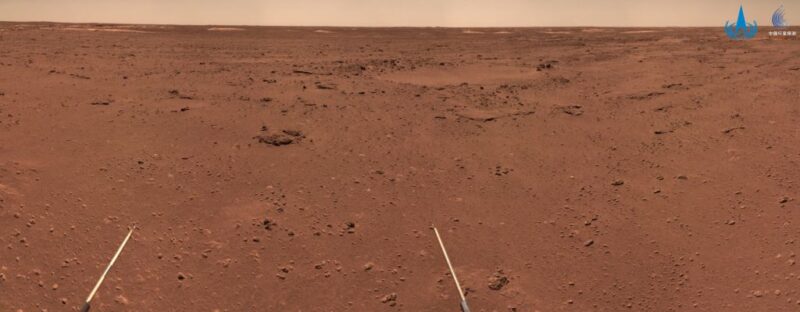China’s Mars Rover Discovers Evidence of Recent Water In Planet’s Sand Dunes
For centuries, astronomers have tried to determine if water exists on Mars. While it was later determined the compound had once covered the planet, many believed it could only exist in its solid or gaseous form. However, a recent study by a team of researchers in China has proved otherwise, with evidence showing water was present on Mars’ lower altitudes as recently as a couple hundred-thousand years ago.

The new findings, discovered by China‘s Zhurong rover prior to it going into hibernation for the Martian winter, indicate Mars may actually have the potential to sustain life. They were revealed in a study published to the journal Science Advances on April 28, 2023.
The team used the rover’s instruments to take samples of the salt-rich sand dunes of Mars’ Utopia Planitia, in the planet’s northern hemisphere. They noticed cracks, polygonal ridges, granulation and crusts containing hydrated silica and sulfates, possible chlorides, and trivalent iron oxide minerals.
These cracks and crusts likely mixed with melting snow or morning frost as recently as 400,000 years ago, forming salty liquid water that could potentially create fertile areas. While there was initially a belief these cracks were caused by wind or frost made of carbon dioxide, this has since been ruled out.
In a press release, Xiaoguang Qin of the Institute of Geology and Geophysics said, “According to the measured meteorological data by Zhurong and other Mars rovers, we inferred that these dune surface characteristics were related to the involvement of liquid saline water formed by the subsequent melting of frost/snow falling on the salt-containing dune surfaces when cooling occurs.”

Previous studies showed water had once covered a vast portion of Mars, but that a dramatic change in the planet’s climate billions of years ago eventually made it difficult for it to exist in its liquid form. This was later disproven to an extent, with NASA’s Phoenix Mars Lander uncovering evidence that salty liquid water can appear at high altitudes in the summer.
It wasn’t until the recent Tianwen-1 Mars exploration mission, however, that evidence was found to show the presence of liquid water at much lower altitudes. Writing in an email to the Associated Press, Qin explained, “We think it could be a small amount … no more than a film of water on the surface.”
He added that, while the Zhurong rover didn’t directly detect water, computer simulations and additional observations indicate conditions could still be favorable for the compound to appear. “This is important for understanding the evolutionary history of the Martian climate, looking for a habitable environment, and providing key clues for the future search for life,” he explained.

The media release states, “The estimated age of the dunes (about 0.4-1.4 million years) and the relationship among the three phases of water suggest that the transfer of water vapor from the polar ice sheet toward the equator during the large obliquity stages of Mars’s late Amazonian period led to repeated humid environments at low altitudes.
“Therefore, a scenario of water activity has been proposed, i.e., cooling at low altitudes during Mars’s large obliquity stages prompts frost/snow to fall and subsequently results in the formation of crusts and aggregates on the salty dune surface, thus solidifying dunes and leaving traces of liquid saline water activity.”

The Zhurong rover, China’s first to land on a planet other than the Moon, was launched in 2020 and arrived on Mars the following year. The device spent a year exploring the over a mile of the planet, before going into hibernation in May 2022.
More from us: For the First Time, Astronomers Have Observed A Star Eating Up A Planet
At present, it’s unknown if the rover will ever wake up, as chief designer Zhang Rongqiao says it’s likely covered with dust, which has cut off its power source.





